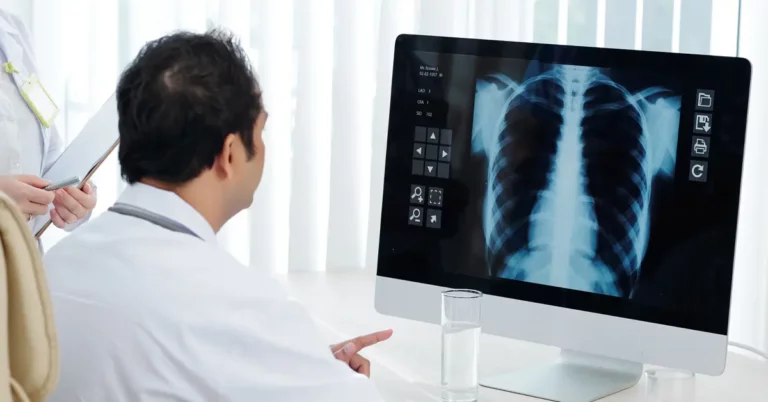Traditional patient monitoring has long been a reactive process: A patient’s condition worsens, they call the office, schedule an appointment, or, in the worst-case scenario, end up in the emergency room. For US healthcare providers, this reactive cycle is inefficient, costly, and, most importantly, can lead to preventable harm. Remote Patient Monitoring (RPM) shifts this model by supporting earlier detection of concerning trends and timelier clinical follow-up.
This guide explores how technology is shifting patient monitoring from a reactive model to one that supports earlier detection and intervention. By identifying concerning trends sooner, clinicians can engage patients earlier in their care and potentially reduce the risk of complications or hospitalizations.
The Problem with Reactive Monitoring: A Costly Cycle
The current system of care is largely episodic. Clinicians rely on data collected during infrequent office visits or patient-reported symptoms, often subjective and delayed. This model leaves gaps in available clinical data between appointments, during which a patient’s condition may worsen without timely detection. Such gaps can contribute to delayed interventions, higher rates of hospitalization, and avoidable complications:
- Increased Hospitalizations: Chronic conditions such as heart failure and COPD can worsen between office visits, sometimes resulting in hospital admissions. Earlier detection through remote monitoring may reduce the risk of acute decompensation and allow for timely outpatient intervention.
- Higher Costs: A visit to the emergency room or a hospital stay is far more expensive than a timely, proactive intervention in the home.
- Patient Dissatisfaction: Patients feel disconnected from their care team, and their lack of a continuous safety net can lead to anxiety and frustration.
Enhancing Early Detection with Next-Generation Monitoring Technology
Next-generation patient monitoring is moving beyond reactive care. Instead of intervening only when a patient deteriorates, these technologies support earlier recognition of risk. Advances in continuous monitoring, data integration, and predictive analytics are helping clinicians identify changes sooner and respond more effectively.
- Continuous Data Streams: This new model is based on a constant stream of objective data. Remote Patient Monitoring (RPM) devices, such as wireless blood pressure cuffs, pulse oximeters, and scales, collect and transmit real-time data from the patient’s home, eliminating the “data gaps” of traditional care.
- Intelligent Data Analysis: Beyond raw measurements, advanced monitoring platforms increasingly apply AI and machine learning to identify subtle trends. For example, gradual weight gain in a heart failure patient may suggest fluid retention and potential decompensation. These analytics can highlight changes earlier than routine symptom reporting, supporting more timely clinical assessment.
- Actionable Notifications and Clinical Decision Support: For impact, insights must be delivered as actionable notifications. Alerts can guide clinicians to intervene when patient trajectories signal rising risk through medication adjustments, dietary recommendations, or a telehealth consult. In this way, monitoring technologies extend oversight beyond clinic walls and enhance existing models of care.
Proactive Monitoring: Reducing Risk and Resource Burden
The shift to proactive monitoring provides a significant value to providers and patients.
- For the Provider: Proactive patient monitoring can support better outcomes by enabling earlier interventions and closer follow-up. The Centers for Medicare & Medicaid Services (CMS) has acknowledged the value of these services by establishing reimbursement pathways for Remote Patient Monitoring (RPM) and Chronic Care Management (CCM). These codes provide a framework for sustainable program implementation, while also aligning financial incentives with improved continuity of care.
- For the Patient: The patient benefits from a continuous safety net that makes them feel secure and connected to their care team, leading to increased satisfaction and a sense of empowerment in managing their health.
Overcoming the Hurdles to Implementation
While the benefits of next-gen patient monitoring are clear, implementation can present challenges. Successful adoption requires a strategic approach to technology, workflow, and staff training.
- Technology Selection: Systems should provide clear, accessible interfaces for patients and efficient workflows for care teams. Equally important is the ability to integrate with existing electronic health record (EHR) systems to reduce duplication of work. Vendor support, training, and interoperability standards should also be considered to facilitate adoption and long-term sustainability.
- Workflow Optimization: Implementing a new monitoring program requires thoughtfully redesigning clinical workflows. Roles and responsibilities for monitoring data, responding to notifications, and following up with patients must be clearly defined to avoid staff burnout and reduce the risk of missed or delayed care.
- Patient Buy-In: Educating patients on the technology’s benefits and how it will improve their care is essential for ensuring high adherence and long-term program success.
DrKumo: Tools for Early Detection and Clinical Decision Support
Choosing the right technology partner is the most important decision in building a successful predictive care model. DrKumo provides a platform that supports transformation from a reactive process into a proactive one.
- Advanced Analytics for Early Clinical Intervention: DrKumo’s platform uses advanced AI to analyze patient data in real-time, identifying subtle trends and sending proactive notifications to your clinical team. This allows for timely intervention that can help reduce the risk of a crisis.
- Integration and Scalability: The platform is designed to work with existing electronic health records (EHRs) and a variety of remote monitoring devices, consolidating patient data into a single dashboard for clinical review. Its modular design supports program growth and can help practices expand remote monitoring capabilities while minimizing additional administrative workload.
- Implementation Support and Clinical Guidance: DrKumo provides a technology platform and a true partnership. Our team offers expert guidance on everything from patient onboarding and compliance to billing and workflow optimization, ensuring your program’s success.
Takeaways
Patient monitoring has evolved from periodic vital sign checks to continuous, real-time data collection and analysis. Using advanced technologies such as AI and predictive analytics, clinicians can identify changes in patient status earlier, enabling timely interventions and supporting a more proactive approach to care.
This new era of continuous, intelligent monitoring empowers clinicians to detect subtle changes in a patient’s condition, and intervene before a crisis occurs. It’s not just about watching a patient, it’s about understanding their story through data and acting on it, ensuring a safer and more responsive healthcare experience for everyone.
Ready to elevate your patient care with next-generation monitoring? Explore how our innovative technology can help your team predict and reduce the risk of health crises. Contact us today to learn more and schedule a personalized demo.
Disclaimer: This article is intended for informational purposes only and is not a substitute for professional medical advice. Healthcare providers should always use their clinical judgment and refer to official medical guidelines when implementing patient care protocols.








